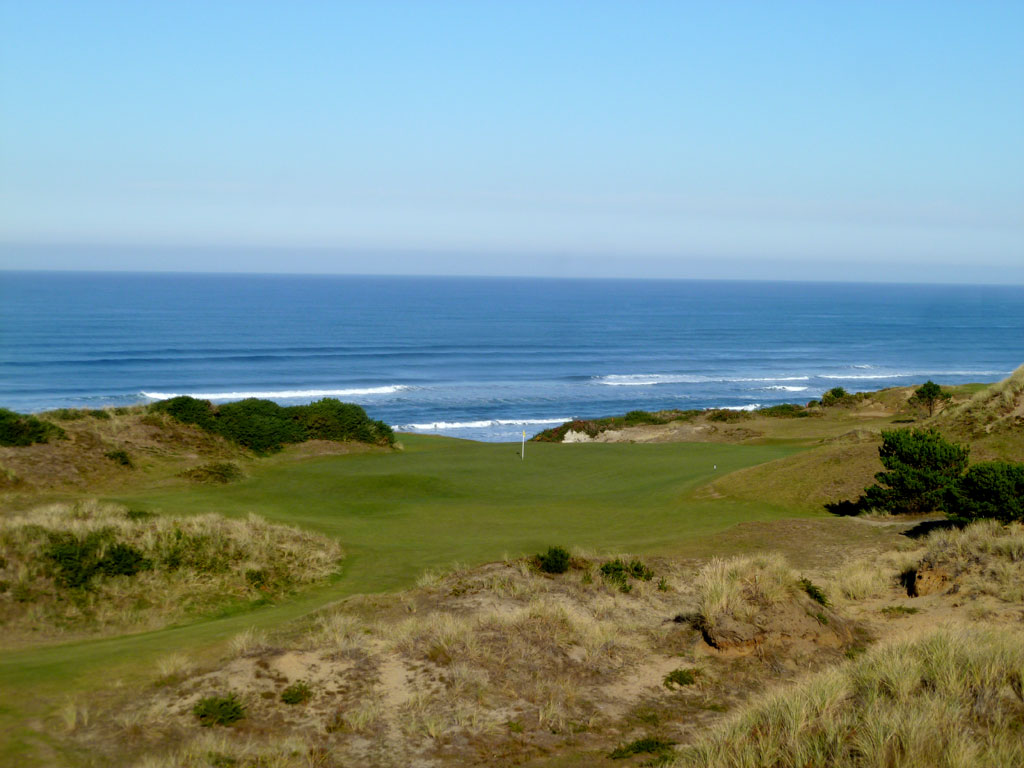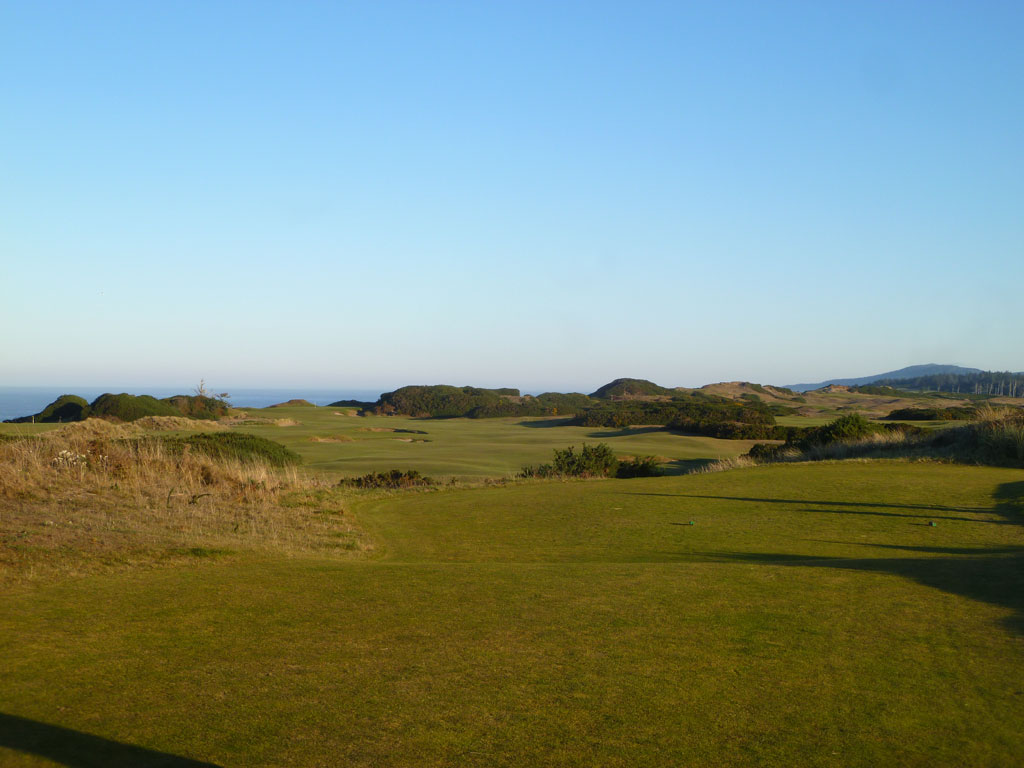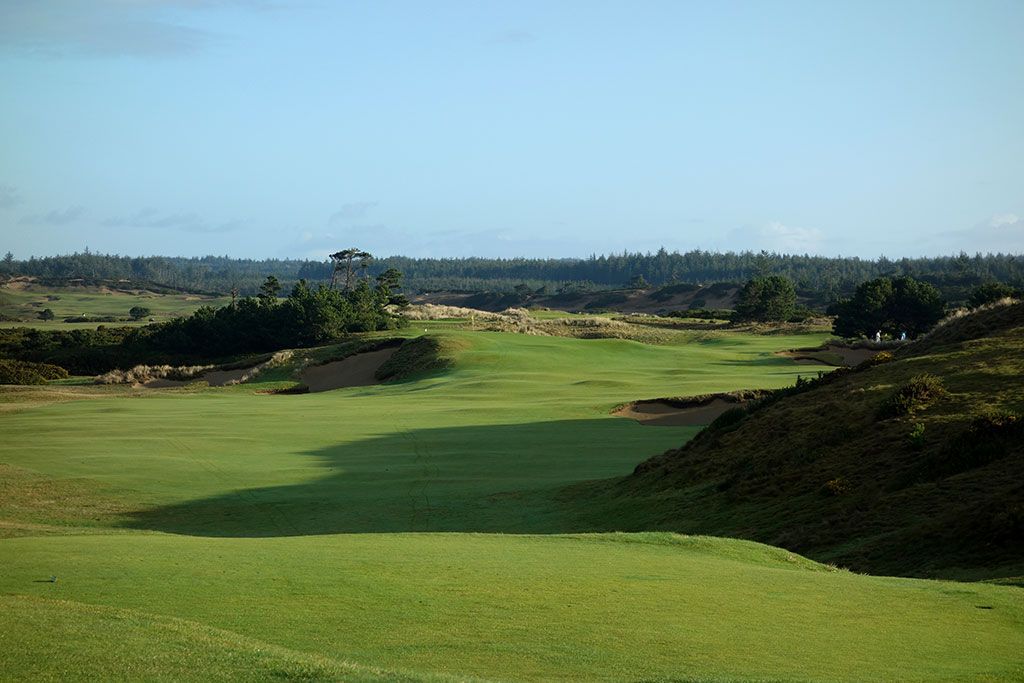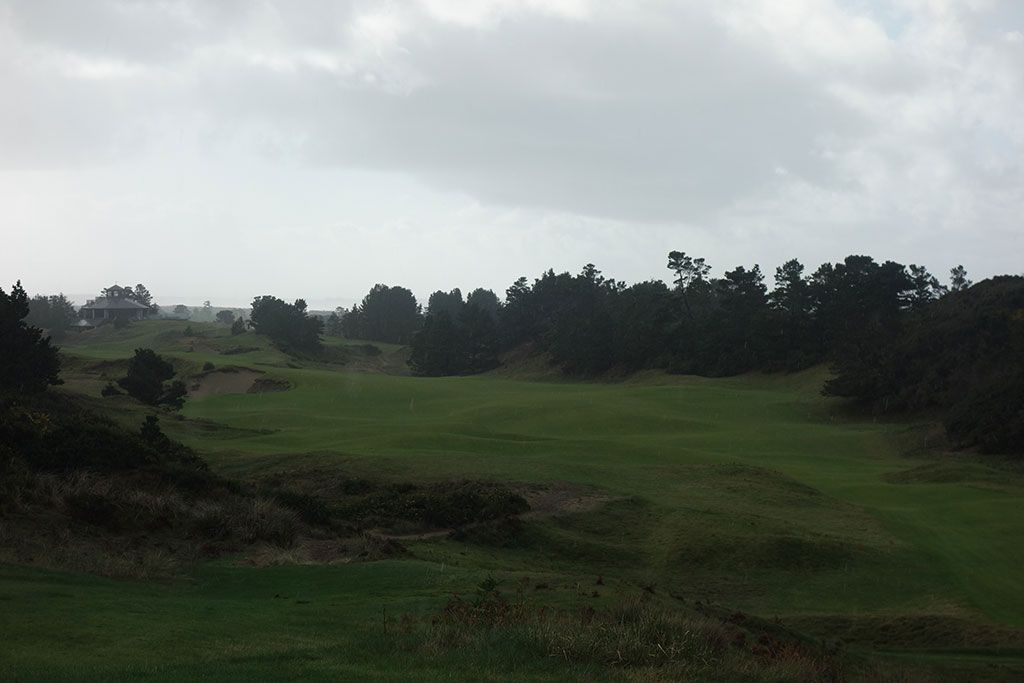Pacific Dunes
Article by: Billy SatterfieldTalk about which course at Bandon Dunes Resort is an endless debate, but if there is one course that rises to the top more often than the others it is Pacific Dunes. When Bandon Dunes opened in 1999 there were rumblings of great golf on the Oregon coast; when Pacific Dunes opened in 2001 it immediately became a must-visit destination. It was Pacific Dunes that launched Tom Doak's design career from being a relatively unknown, yet strongly opinionated, pupil of Pete Dye to one of the most celebrated architects on the planet.
2001 was one of the most competitive years for new upscale public courses to open and Pacific Dunes was impressive enough to beat out the stunning Arcadia Bluffs course in Michigan and the video-game-come-to-life course of Wolf Creek in Mesquite to claim Golf Digest's top spot. With ocean views, unique hole designs, and some of the most fun you can have on a golf course, Pacific Dunes kept rising in the rankings and currently sits at the #2 public course in the country behind Pebble Beach in every major publication.
You'll almost never find Tom Doak design a course to a par 72 like most architects will. Doak thrives on being unconventional on his approach and never is that more obvious then at Pacific Dunes. His unique par 71 routing features just one par three and one par five on the front nine and then counters that with just two par fours on the back nine. Among the four par threes on the back nine are back-to-back one-shotters at 10 and 11. #10 features an upper tee box and a lower tee box and it varies day to day which one you'll be asked to play which is dictated by whether the upper or lower green on #9 is in play that day. The drop shot par three 10th plays straight towards the ocean while the postcard worthy 11th hole plays along the coastline and is easily the most photographed hole on the course.
Doak is an advocate of considering the wind conditions in his designs and he delivers with an impressive combination of coastal holes with #4 and #13. #4 tips out at 463 yards while #13 measures 444 yards and plays a bit uphill at the end. Like an old western duel, the deepest tees sit back to back to each other and then pace away in opposite directions down the coast line. Therefore, if the wind is in your face on #4, you get the benefit of being downwind on #13. If the wind is blowing in from the ocean on #4 it is going to push your ball left, and on #13 it will push your ball right. So while the yardage is similar on the scorecard, these two coastal masterpieces will almost surely play completely different. If one of these holes doesn't end up being one of the best two-shotters you've played in your life then I have some serious doubts of why you are even on this trip.
Another Doak favorite is designing half-par holes. Tom is a 10 handicapper and loves to figure out way to balance the scoring opportunities between low handicap players and higher handicappers. By making the holes extra long or extra short in comparison to their relative par and combining that with tight chipping areas around the green where higher handicappers can putt and lower handicappers struggle to chip cleanly, the playing field is leveled in a match play format which is the preferred method of play on links courses. From the back tee you'll find short par fours measuring 304, 368, 316, and 338. On the flip side you find 1/2 pars the other way with lengthy par fours measuring 463, 464, and 444. He doesn't stop with this method on the par fives where #3 tips out at 499 yards while the closing hole stretches out to 591 yards with one of the most undulated fairways you'll ever encounter.
Perhaps the hole I am most intrigued to see how people fair on is #6. This short half par hole tips out at a measly 316 yards, but I promise you that more than one person reading this will walk away with a double bogey, or worse. The conservative player hits an iron off the tee but may not realize how difficult it will be to hold the domed green that sits on the dune well above him, particularly with a 7 iron or so in hand. The bold player will pull out their driver and take a rip at the green with visions of grandeur dancing in their head. However, taking dead aim at the flag is a sure fire guarantee you'll be disappointed with the result as you see the fairway suck your ball left of your desired line and resulting in one of the most difficult and awkward shots you can face at Pacific Dunes. To your dismay you'll find yourself having to hit a non-full shot off a tight lie over one of the biggest bunkers on the course to the shallowest angle that green affords. Come up short and you'll face the most intimidating bunker shot of your life where getting out and onto the green is nearly impossible for a first timer to pull off on their first attempt. Go long on your approach and you'll discover the green quickly falls off and send balls tumbling down the backside of the hole to another tight lie chipping area. Going back and forth over the green is not uncommon; neither is taking a snowman.
But that is links golf. There is no "fair" which is why this style of golf course is best enjoyed as match play rather than stroke play. It isn't how well you score, it is how well you navigate the bumps and bounces compared to the guy you are playing. Many players that tee it up at St. Andrews the first time are underwhelmed with the golf course. It is flat, surrounded by a small town, and 12 of the holes share just 6 greens. There aren't dramatic ocean holes or stunning vistas, but those with a fine eye learn to appreciate her subtle features. Each time around the course you learn more and more about what make the Old course such a special place. As much as I wish we could spend the whole week in Bandon and play each course 2-3 times, this trip will at least give you a taste of just how good golf can be and give you every reason in the world to figure out how to do a return trip.







